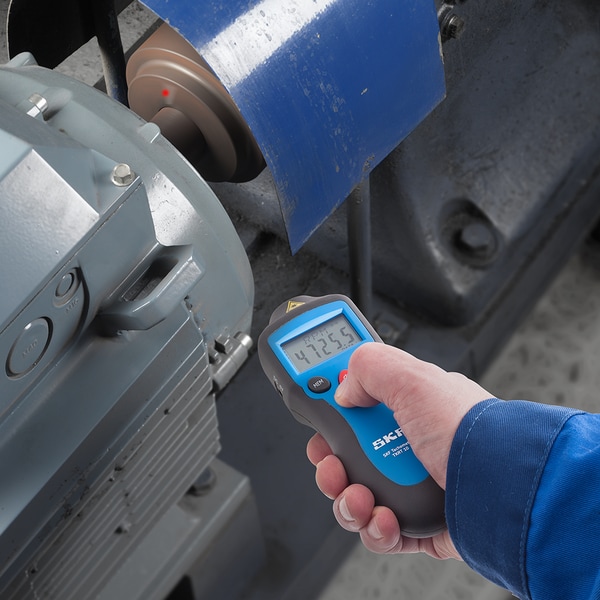Tachometer Basics: Whatever You Required to Know for Accurate Readings
Wiki Article
Opening the Keys of Tachometers: Whatever You Need to Understand About This Essential Instrument in Your Lorry
Comprehending the ins and outs of tachometers can give beneficial insights right into your vehicle's efficiency and maintenance demands. From gauging engine speed to deciphering the information it presents, tachometers work as a crucial device for car owners and fanatics alike. By deciphering the enigmas behind this important tool, you can open a wide range of information that can boost your driving experience and guarantee the long life of your car.Significance of Tachometers
The relevance of tachometers depends on their ability to give important real-time information about an engine's rotational speed, permitting specific tracking and upkeep of equipment. By determining the revolutions per min (RPM) of an engine's crankshaft, tachometers supply beneficial understandings right into the engine's performance - tachometer. This data is necessary for ensuring that the engine operates within its optimum variety, staying clear of prospective damages from over-revving or underperformingTachometers play an important role in helping drivers and professionals discover any kind of anomalies in the engine's rate, which could indicate concerns such as gas inadequacy, mechanical issues, or extreme pressure on the engine. By quickly identifying these issues via tachometer readings, maintenance can be performed proactively, protecting against pricey fixings and downtime in the future.
Moreover, tachometers are particularly vital in high-performance automobiles and machinery, where precise control over engine speed is needed for optimal operation. Racing autos, aircraft, and industrial tools depend on tachometers to provide peak efficiency while maintaining safety and security criteria. Basically, tachometers are not just tools for gauging rate but essential tools for guaranteeing the smooth and efficient operation of engines across numerous applications.
Exactly How Tachometers Action Engine Speed
Making use of sensors that find the frequency of electric pulses produced by the engine's ignition system, tachometers properly measure the rotational speed of an engine. By monitoring the rate at which these pulses are gotten, tachometers supply real-time responses on how quickly the engine's crankshaft is revolving per min, generally described as revolutions per minute (RPM)
The tachometer's sensing unit, usually connected to the engine's ignition coil or ignition system cables, grabs the electric signals generated each time a cylinder fires. These signals are then transformed into RPM readings showed on the scale or instrument cluster within the vehicle driver's sight. Tachometers can be analog or digital, with modern automobiles typically featuring electronic displays for precise and immediate RPM analyses.
This information is vital for vehicle drivers to recognize the engine's efficiency, stop over-revving, maximize equipment moving, and guarantee reliable fuel consumption. By properly gauging engine speed, tachometers play an essential duty in helping motorists run their automobiles safely and efficiently.
Translating Tachometer Analyses
Having a clear understanding of just how tachometers determine engine speed sets the structure for efficiently translating the RPM readings showed. Analyzing tachometer analyses great site is crucial for ideal car efficiency and engine wellness. RPM (Changes Per Min) readings on the tachometer show the speed at which the engine's crankshaft is turning. When the engine is idling, the tachometer needle typically relaxes around 600-1000 RPM, depending upon the lorry. As you accelerate, the RPM will raise, reflecting the engine's greater rotational rate. When moving equipments in a hand-operated transmission car, the RPM will go down as you involve the clutch and modification equipments, then rise again as you accelerate in the new gear. Keeping an eye on the tachometer can assist you establish one of the most efficient shifting points to optimize fuel economy and engine power. Furthermore, uncommon changes or regularly high RPM readings can suggest potential issues with the engine that may require specialist attention. By taking notice of the tachometer readings and comprehending exactly how to interpret them, you can guarantee your automobile operates smoothly and effectively.

Tips for Utilizing Tachometers Effectively
To enhance driving effectiveness and maximize engine efficiency, what secret approaches can be implemented for efficiently using tachometers? Tachometers are important tools that provide real-time responses on engine speed, allowing drivers to make enlightened choices for much better efficiency - tachometer. Right here are some suggestions for using tachometers efficiently:Recognizing Optimal RPM Array: Familiarize yourself with the optimal RPM (Changes Per Minute) variety for your car. Keeping the engine within this array can boost fuel performance and lengthen the engine's life-span.
Moving Equipments at the Right Time: Make use of the tachometer to identify the best time to move equipments. Aim to change equipments when the RPM gets to the ideal array for the next gear.
Monitoring Engine Stress: High RPMs for extended periods can stress the engine. Watch on the tachometer to avoid over-revving, particularly go to this website throughout velocity or when bring heavy loads.
Tachometers and Vehicle Upkeep
When taking into consideration automobile maintenance, tachometers play an important function in keeping an eye on engine efficiency and identifying prospective concerns. Tachometers supply important information on engine rate, allowing chauffeurs and auto mechanics to ensure that the engine is running within the suggested RPM array. Frequently monitoring the tachometer analyses can help determine issues such as engine misfires, worn-out trigger plugs, or concerns with the fuel delivery system. By taking notice of the tachometer, motorists can stop excessive strain on the engine, which can this result in expensive fixings down the line.Along with detecting possible issues, tachometers can additionally assist in optimizing gas efficiency. By keeping the engine rate within the optimal range, motorists can enhance their gas mileage and reduce gas intake. This not only benefits the chauffeur's budget but additionally adds to ecological preservation by lowering damaging emissions.
Final Thought

Report this wiki page